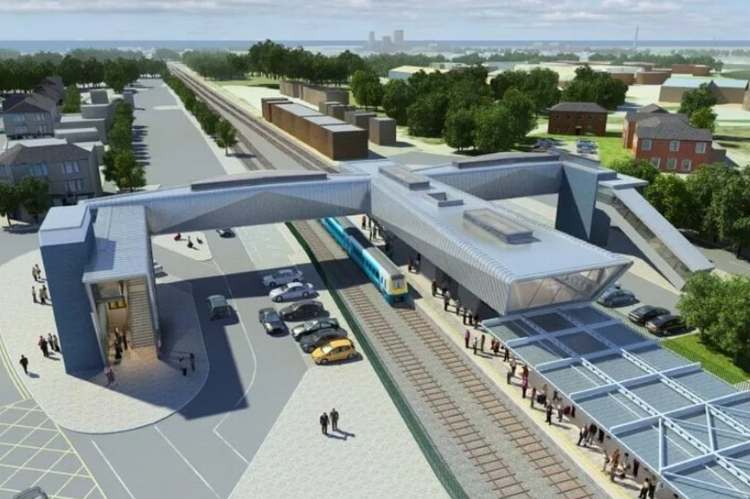
The Union government is preparing to overhaul its transport planning architecture as it seeks to tackle longstanding inefficiencies and streamline infrastructure development. The proposed revamp will bring all modes of transport—surface, railways, shipping, and civil aviation—under a unified planning mechanism, steered by a single nodal ministry.
The ministry of road transport and highways has already submitted initial proposals for the new framework that will institutionalise both five-year and long-term (25-year) strategic plans. These will be subject to periodic review and monitoring, ensuring continuity in transport policy regardless of administrative transitions.
Currently, infrastructure planning across sectors is guided by the Prime Minister’s Gati-Shakti framework—a digital platform designed to identify infrastructure gaps and synchronise Union government projects. However, its remit remains confined to central-level initiatives, limiting its scope and efficacy. The new planning body is expected to work in tandem with Gati-Shakti but with a broader and more strategic focus. While Gati-Shakti addresses immediate execution timelines and project-level integration, the proposed agency will identify optimal transport modes, evaluate long-term economic and environmental impact, and ensure cohesive investment prioritisation across sectors.
READ I Why Trump’s trade war with China is doomed to fail
Bridging the transport planning gap
Inspired by institutional models in the US, UK, Germany, Australia, and Japan, the government envisions a robust, centralised body that will coordinate national transport policy with an integrated approach. Both NITI Aayog and the Department for Promotion of Industry and Internal Trade (DPIIT) have expressed interest in anchoring the agency, although a transport-focused ministry—such as roads or railways—is more likely to lead the charge. Importantly, to avoid bureaucratic inertia, the government is inclined to keep the agency non-statutory, allowing for agile decision-making.
India’s rapid urbanisation and economic transformation have outpaced its transportation infrastructure, particularly in metropolitan and Tier-2 cities. Rising dependency on private vehicles, coupled with inadequate public transport systems, has led to growing congestion, pollution, and economic inefficiency. While previous policy initiatives have called for integrated and sustainable transport planning, execution has faltered due to siloed operations across ministries and fragmented authority between the Union government and states.
Efforts over the past two decades to establish a unified transport framework have failed to yield sustained impact. Inter-ministerial schemes often function in isolation, duplicating efforts and misallocating resources. The decentralised nature of execution—where cities and states follow their own planning trajectories—has led to inconsistent results, particularly in urban mobility.
A unified national transport planning body, therefore, could help align these disparate efforts, standardise best practices, and coordinate seamlessly with state governments on infrastructure requirements. Among its key objectives will be assessing capacity augmentation needs for both freight and passenger traffic, ensuring that new projects are not only viable but also future-ready.
Challenges and opportunities
The need for integrated planning has become more urgent as India’s railways grapple with track saturation, forcing freight and passenger services to compete for space. National highways, meanwhile, continue to suffer from maintenance issues and subpar construction quality, undermining both safety and efficiency. A cohesive transport strategy can help address these challenges by targeting investment where it’s needed most and enabling better intermodal coordination.
One of the most critical gaps in India’s current transport landscape is the lack of integration between different transit systems. In many cities, metro networks, bus services, and last-mile options operate in silos, often competing rather than complementing each other. Seamless fare systems, unified ticketing, and physical integration of networks remain elusive. Experts argue that a multimodal transport ecosystem—integrating rail, road, metro, and non-motorised transport—must become the backbone of India’s mobility agenda.
However, the road ahead is not without hurdles. Aligning ministries with divergent priorities, ensuring evidence-based policymaking, and avoiding duplication with existing platforms like Gati-Shakti will be challenging. Analysts also caution that the absence of a statutory mandate may limit the agency’s enforcement power, particularly in coordinating with state governments.
The sustainability imperative
As India redesigns its transport policy, sustainability must become a central pillar. Urban sprawl, rising emissions, and a public transit system that remains underfunded and underutilised raise serious questions about environmental and economic resilience. Historically, Indian urban planning has prioritised vehicular infrastructure over pedestrian needs and public transport. This has only exacerbated traffic congestion, air pollution, and social inequities.
A reimagined transport planning authority offers a chance to reverse this trend by focusing on low-emission mobility, prioritising non-motorised transport infrastructure, and incentivising public transport usage. These reforms are not only essential for meeting the UN Sustainable Development Goals but also for achieving India’s commitment to net-zero carbon emissions by 2070.
India’s transport sector is at a critical inflection point. With rising economic demands and urbanisation pressures, piecemeal interventions are no longer sufficient. A coordinated, long-range transportation plan could serve as a game-changer—unlocking economic growth, improving mobility, and positioning India as a global leader in sustainable infrastructure.
As the government moves forward with this ambitious overhaul, the success of the initiative will depend on its ability to harmonise policy across levels, prioritise public interest over political convenience, and adopt a vision that balances growth with equity and sustainability.
